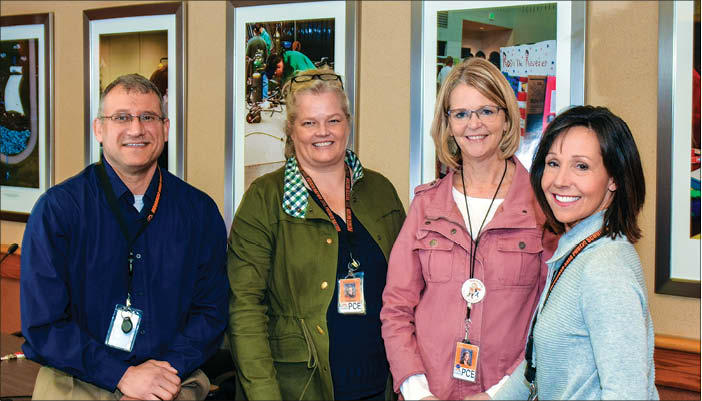Starting school is a big step for every youngster. But what if it’s new not only to children, but to their parents?
That’s the sometimes-baffling gap that must be spanned by many of the thousand or so Moorhead students who come from homes where English is not the first language. That means that more than 10 percent of the district’s parents and children communicate in one of a globe-spinning variety of tongues, 29 in all. The top four: Kurdish (262); Somali (210); Arabic (167); and Spanish (161).
Not only is language a challenge. Many New Americans – immigrants and refugees – have no personal experience with the everyday ins and outs of American education, from attendance policies and teachers’ expectations to the busing system and graduation requirements. Knowing how to navigate the system can be a big obstacle for parents anxious for their children to succeed in school on the way to a bright future.
Missy Eidsness, the Moorhead school district’s assistant superintendent for learning and accountability, says, “All kids are a gift. Our goal is to establish a trusting relationship with their families so that they can ask the questions we need to hear to solve the problems and meet their needs.
“What information does the family need about our schools? And vice versa – what do we need to know to do a better job? We want to make sure we understand each other.”
That’s where Moorhead’s multi-lingual parent liaisons come in. “It’s a small but growing program,” explains Kari Yates, now in her fifth year as program manager for literacy and English learning, “and it has a lot of different faces.
“Parents are the first teachers,” she points out. “Success in school starts at home. Our schools aren’t as accessible to some as they are to others. Perhaps they don’t speak the language well enough to get answers, or they didn’t have a positive school experience themselves. There are so many stressors! We’ve learned that when the connections between school and home are strong, the students thrive.”
The situations are not new. According to Missy, the home liaison program goes back at least 20 years, when the district employed its first part-time helpers to work with migrant, homeless and Native American families. While the number of migrants has diminished, the other two target groups continue, with about half a dozen individuals answering families’ questions and suggesting solutions to make education smoother.
The need for New American connections is newer. Since 2014, the district has added a focus on their needs, not just in terms of schooling but also in linking them to other resources. Three people are liaisons for families of English language learners. Both Abdi Osman and Shawan Al Salim have been working in the district for the past year. Crystal Ames, who’s been part of the program since its inception, also helps homeless families.
Abdi, who speaks Somali and Swahili, was a child protection worker and trainer in Nairobi, Kenya. He completed a sociology degree at Minnesota State University last spring and is enrolled in master’s degree studies at the University of North Dakota.
Shawan, who speaks Arabic and Kurdish, was an educator in Iraq and Yemen, including many years as a middle- and high-school principal. He, too, has completed a degree at MSUM in educational leadership.
“They help parents access our schools. They’re very passionate about their communities,” Missy observes. “They put everything they’ve learned into easing others’ path. With their experiences and their language, they’re in a position to do a better job of communicating.
“That’s just part of what they contribute, though. They also educate us. They make us more aware of what we need to overcome. Where does our system work against families without even realizing it? I appreciate that side of what they do as much as the other.”
Moorhead’s liaisons usually reach out to families when they register their children. They often meet in homes during evenings or weekends. Sometimes the liaisons respond to concerns expressed by teachers, principals or counselors. More often, they help untangle issues and resources that can baffle newcomers, from specific school policies and basics – the bus system is a big one – to referrals to other community resources like employment, law enforcement and social services.
In addition to her work as a liaison, Crystal is involved in planning and recruiting parents to attend the five New American Parent Forums scheduled throughout the school year. Invitations go out in many languages, and half a dozen translators are on hand to clarify questions and answers. The first, held last month, centered on graduation requirements, attendance and school busing. The next – set for Nov. 28 – focuses on academic and behavioral supports.
Along with state and federal pass-through programs, the New American liaison budget has been underwritten by the Otto Bremer Foundation. As it is with services for homeless and Native American families, the amount of funding available to the district is very limited. “We do have some choice in how these funds can be used,” Missy says. “Our experience has shown us that the home liaisons are the right place to put those dollars.”



